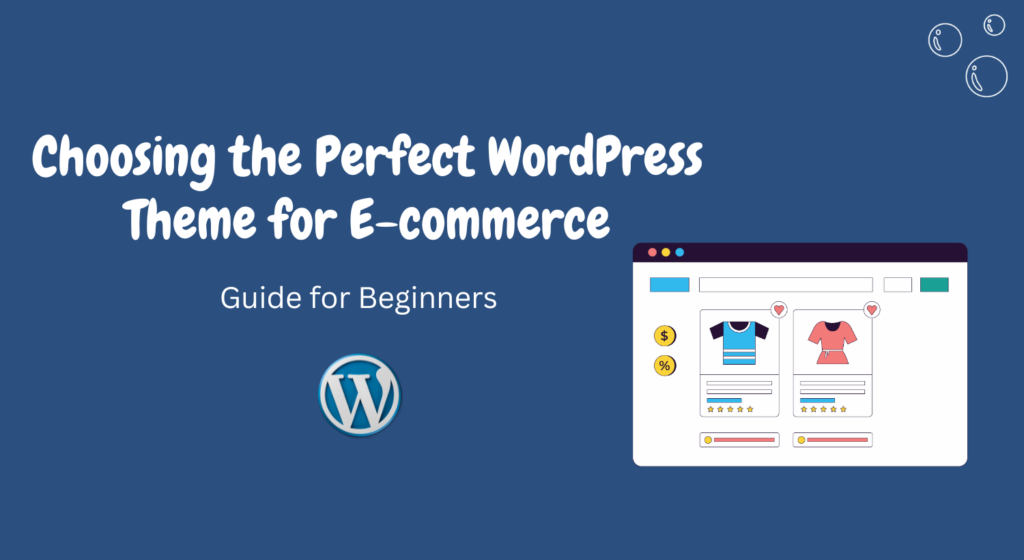If you’re venturing into the world of e-commerce, one of the most crucial decisions you’ll make is selecting the right WordPress theme for your online store.
Your website’s appearance and functionality play a significant role in attracting customers and enhancing their shopping experience.
With the plethora of options available, it can be overwhelming to find the perfect theme that suits your business needs.
In this article, we’ll guide you through essential tips to consider when choosing the ideal WordPress theme for your e-commerce venture.
1. Understand Your Brand Identity
Before you start browsing through themes, take a step back and define your brand identity. Your theme should align with your brand’s values, colors, and aesthetics. A consistent brand identity creates a sense of trust and professionalism among your customers.
2. Opt for Responsive Design
In the age of mobile browsing, responsive design is non-negotiable. A responsive theme ensures that your website looks and functions seamlessly across various devices and screen sizes. This is crucial as many users shop on their smartphones or tablets.
3. Consider Page Loading Speed
Speed is a critical factor in retaining visitors. A slow-loading website can deter potential customers and lead to higher bounce rates. Opt for a theme that is well-coded and optimized for fast loading to provide a smooth browsing experience.
4. Prioritize User-Friendly Navigation
Easy navigation is key to keeping visitors engaged. Choose a theme that offers intuitive and user-friendly navigation menus. Customers should be able to find products and information effortlessly.
5. Compatibility with E-commerce Plugins
WordPress offers a variety of e-commerce plugins like WooCommerce that enhance your online store’s functionality. Ensure the theme you choose is compatible with these plugins to make the most of your e-commerce capabilities.
6. Customization Options
Flexibility in customization allows you to tailor your website according to your unique business requirements. Look for themes that provide various customization options for colors, layouts, and fonts.
7. Focus on SEO Readiness
An SEO-optimized theme can significantly impact your website’s search engine ranking. Check if the theme follows best practices for SEO, such as proper HTML structure and schema markup.
8. Review User Reviews and Ratings
Before committing to a theme, explore user reviews and ratings. This provides insights into other users’ experiences with the theme, helping you make an informed decision.
9. Check for Regular Updates
WordPress themes need to be updated regularly to remain compatible with the latest version of WordPress and to fix any bugs. Ensure the theme you select is actively maintained by its developers.
10. Ensure Cross-Browser Compatibility
Your customers may use different web browsers. Choose a theme that is compatible with major browsers like Chrome, Firefox, Safari, and Edge to guarantee a consistent experience for all users.
11. Evaluate Demo Content
Most themes come with demo content that showcases how your website could look. While these demos can be enticing, remember that your actual content might differ. Focus on the theme’s structure and layout rather than the demo content.
12. Consider Security Features
Security is paramount for e-commerce websites that handle sensitive customer data. Opt for a theme that follows security best practices and integrates well with security plugins.
13. Customer Support
In case you encounter technical issues or need assistance with customization, reliable customer support from the theme developer is crucial. Check the support options available before finalizing your choice.
14. Evaluate Pricing
Themes vary in pricing – from free to premium options. While it’s tempting to opt for free themes, premium themes often offer better support, updates, and features. Assess your budget and the value the theme provides.
15. Test Responsiveness
Before making a final decision, test the theme’s responsiveness on different devices yourself. Ensure that images, text, and buttons adapt well to different screen sizes.
In conclusion, choosing the perfect WordPress theme for your e-commerce venture is a decision that requires careful consideration.
By following these tips and evaluating themes based on your business needs, you can create a visually appealing and highly functional online store that resonates with your target audience.
FAQs
1. Why is responsive design important for an e-commerce website?
Responsive design ensures that your website looks and functions seamlessly on various devices, enhancing user experience and potentially increasing sales.
2. Can I switch my WordPress theme later?
Yes, you can switch themes later, but it might require adjustments to maintain the desired appearance and functionality.
3. Are free themes a good choice for e-commerce?
Free themes can work for e-commerce, but premium themes often offer better features and support for online stores.
4. How do I install a WordPress theme?
You can install a theme from your WordPress dashboard by going to Appearance > Themes > Add New and then uploading the theme file.
5. What should I do if my chosen theme becomes outdated?
If your theme becomes outdated and is no longer maintained, it’s recommended to switch to a more up-to-date and supported theme to ensure security and compatibility.


